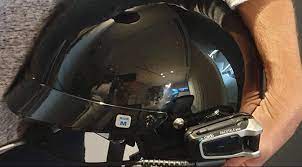Unlocking Boundless Connections: The Power of Virtual Events

The Rise of Virtual Events
In recent years, the popularity of virtual events has soared, transforming the way we connect, learn, and engage with others. Virtual events offer a unique opportunity to participate in conferences, workshops, concerts, and more from the comfort of our own homes.
One of the key advantages of virtual events is their accessibility. With just a computer or smartphone and an internet connection, participants can join from anywhere in the world. This opens up new possibilities for networking and collaboration across borders and time zones.
Virtual events also provide a cost-effective alternative to traditional in-person gatherings. Without the need for travel, accommodation, or venue hire, both organisers and attendees can save time and money while still benefiting from valuable content and interactions.
Moreover, virtual events offer a more sustainable option by reducing carbon emissions associated with travel. By embracing virtual platforms, organisations can contribute to environmental conservation efforts while reaching a wider audience.
Technology plays a crucial role in enhancing the virtual event experience. Features such as live streaming, interactive Q&A sessions, virtual networking rooms, and on-demand content ensure that participants are engaged and connected throughout the event.
As we navigate an increasingly digital world, virtual events have become an integral part of our lives. Whether it’s attending a webinar on industry trends or joining a virtual concert with friends from around the globe, these online gatherings have revolutionised how we come together.
With their convenience, accessibility, cost-effectiveness, and environmental benefits, virtual events are here to stay. Embrace the future of connectivity and engagement by participating in virtual events that inspire, educate, and unite us all.
Seven Essential Tips for Hosting Successful Virtual Events: A Guide to Seamless Online Experiences
- Ensure a stable internet connection for smooth streaming.
- Choose a user-friendly platform for easy navigation.
- Promote the event effectively to reach your target audience.
- Engage attendees with interactive elements like polls and Q&A sessions.
- Provide clear instructions on how to join and participate in the virtual event.
- Test all technology and equipment before the event to avoid technical glitches.
- Follow up with attendees after the event for feedback and future engagement.
Ensure a stable internet connection for smooth streaming.
To ensure a seamless virtual event experience, it is crucial to maintain a stable internet connection for smooth streaming. A reliable internet connection not only prevents disruptions during the event but also enhances the quality of audio and video transmission, keeping participants engaged and connected throughout. By prioritising a stable internet connection, organisers can guarantee that attendees have a hassle-free experience, enabling them to fully immerse themselves in the virtual event content without any technical interruptions.
Choose a user-friendly platform for easy navigation.
When organising virtual events, it is essential to select a user-friendly platform to ensure easy navigation for participants. By choosing a platform that is intuitive and simple to use, attendees can seamlessly access content, engage with speakers, and interact with other participants. A user-friendly platform enhances the overall experience of the event, making it more enjoyable and efficient for everyone involved. Prioritising ease of navigation not only benefits attendees but also reflects positively on the organisers, showcasing their commitment to providing a smooth and engaging virtual event experience.
Promote the event effectively to reach your target audience.
To ensure the success of your virtual event, it is crucial to promote it effectively in order to reach your target audience. Utilise various marketing channels such as social media, email campaigns, and targeted advertisements to create buzz and generate interest among potential attendees. By crafting compelling messaging that highlights the unique value proposition of your event and targeting the right audience segments, you can maximise engagement and participation. Remember that effective promotion not only increases attendance but also enhances the overall impact and success of your virtual event.
Engage attendees with interactive elements like polls and Q&A sessions.
To enhance the attendee experience during virtual events, organisers can utilise interactive elements such as polls and Q&A sessions. By incorporating these features, participants are encouraged to actively engage with the content, share their opinions, and ask questions in real-time. This not only fosters a sense of participation and involvement but also creates a dynamic and interactive environment that keeps attendees interested and connected throughout the event.
Provide clear instructions on how to join and participate in the virtual event.
To ensure a seamless and engaging virtual event experience, it is essential to provide clear instructions on how to join and participate. Clear communication regarding registration procedures, access links, technical requirements, and any necessary preparation steps will help participants feel confident and prepared. By offering straightforward guidance on joining the virtual event, organisers can enhance attendee satisfaction, minimise technical difficulties, and maximise participation rates. Remember, clarity is key to creating a positive and inclusive virtual event environment for all participants.
Test all technology and equipment before the event to avoid technical glitches.
To ensure a seamless virtual event experience, it is essential to test all technology and equipment thoroughly before the event begins. By conducting comprehensive checks and troubleshooting any potential issues in advance, organisers can proactively address technical glitches and prevent disruptions during the event. Testing equipment such as cameras, microphones, internet connectivity, and streaming platforms will help guarantee that everything runs smoothly, allowing participants to fully engage with the content without interruptions. Prioritising thorough testing is key to delivering a successful virtual event that leaves a lasting positive impression on attendees.
Follow up with attendees after the event for feedback and future engagement.
Following up with attendees after a virtual event is essential for gathering valuable feedback and fostering future engagement. By reaching out to participants, organisers can gain insights into what worked well and areas for improvement, helping to enhance the overall event experience. Additionally, engaging with attendees post-event demonstrates a commitment to building lasting relationships and encourages continued participation in upcoming events. Feedback from attendees not only helps in refining future events but also strengthens the connection between organisers and participants, creating a sense of community and collaboration in the virtual space.

